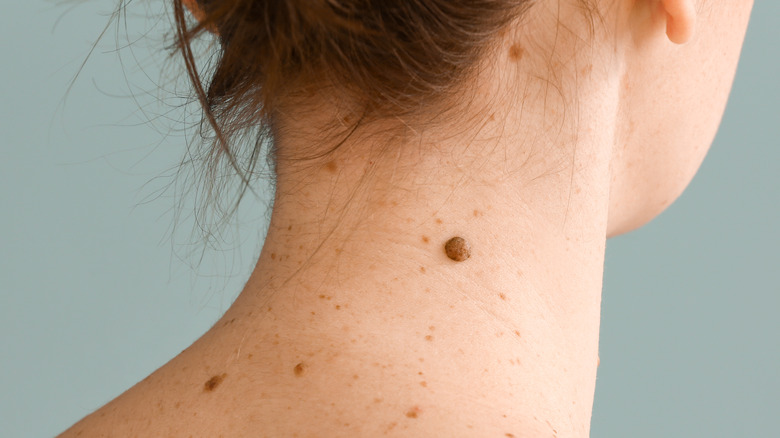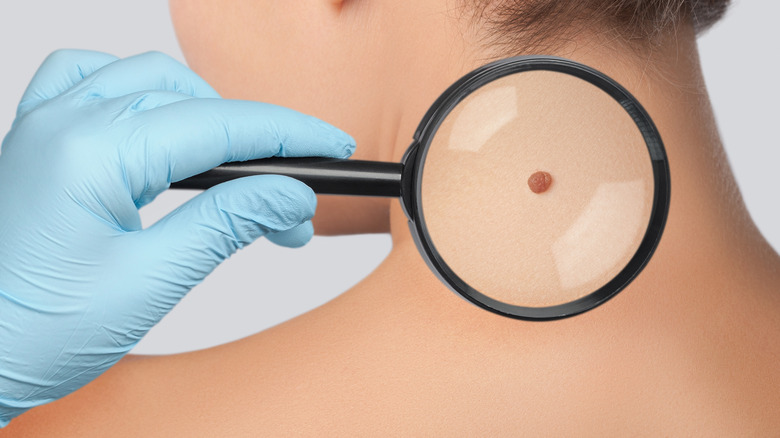What It Really Means When You Have A Mole On Your Neck
An equipment manager on the Vancouver Canucks hockey team was shocked when a woman sitting on the bench behind him alerted him with a message: "The mole on the back of your neck is possibly cancerous." Although he disregarded the message at first, he went to his doctor to get the mole checked. The woman was right — it was melanoma (per 7News Australia).
According to the Moffitt Cancer Center, the neck is one of the most susceptible places in our body to develop skin cancer because it's often exposed to the sun. Although we might remember to put sunblock on our face daily, our necks are also typically exposed, even in cooler temperatures. When we do remember to put sunblock on our necks, it is more likely to be rubbed away by our hair or clothing.
Having a mole on your neck might cause alarm, but not all moles are cancerous. Moles occur on the body when the skin's pigment cells cluster together (via Medline Plus). Most of us have between 10 and 40 moles on our bodies, which will lighten or darken with age, according to the American Academy of Dermatology Association (AAD). Although most moles are common, one in 10 of us will encounter an atypical mole that will have an irregular shape and color (via American Osteopathic College of Dermatology).
The risk factors for melanoma
The locations of the moles on your body can indicate different prognoses. A 2008 study published in the Archives of Dermatology found that melanoma in the neck or scalp area had a lower survival rate than other areas of the body. The AAD suggests that because we have more blood vessels in our head and neck, melanoma cells spread much more quickly. Because a mole on your neck is easier to spot than a mole on your scalp, you're more likely to seek treatment before any cancerous cells have a chance to spread.
According to the National Cancer Institute, some of the risk factors for melanoma include irregular moles, having more than 50 regular moles, excessive sun exposure, and family history. If you are concerned about a mole, a 2004 study in the Journal of the American Medical Association suggests examining your moles by the "ABCDE" rule. "A" stands for asymmetry and involves examining one side of the mole to determine how it is different from the others. "B" represents the border irregularity of the mole, while "C" indicates the color differences of the mole. "D" is indicative of the diameter of the mole, while "E" represents evolution and how the mole has changed in color or shape.
A 2015 study in the Journal of Clinical and Aesthetic Dermatology also includes the "ugly duckling rule," which involves checking for any moles that are unlike the others on your body.


